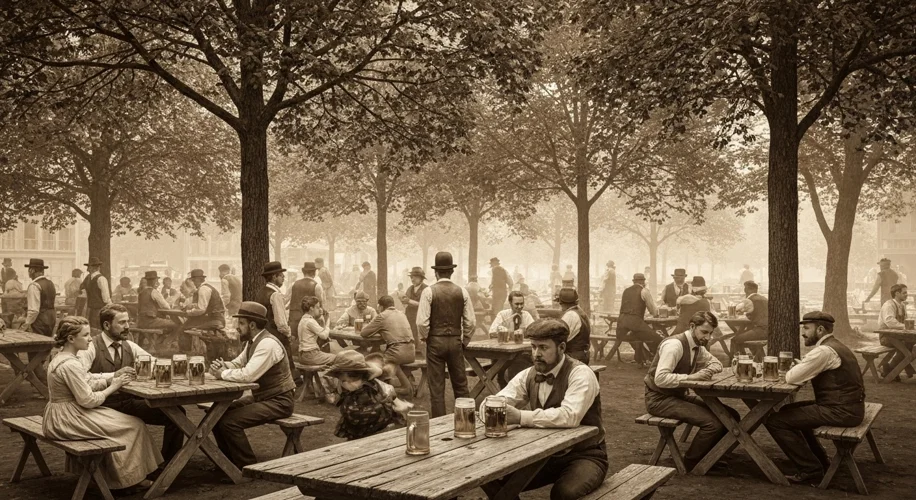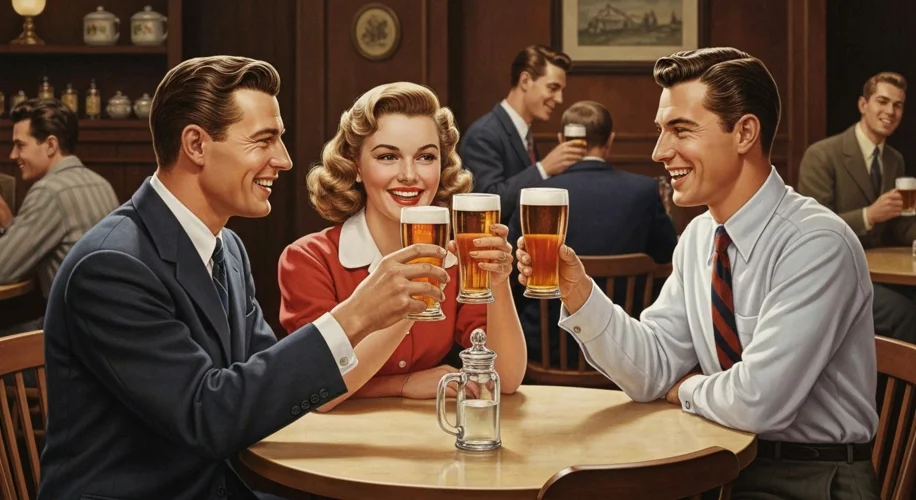Wisconsin. The very name conjures images of rolling dairy farms, fierce Packers fans, and, perhaps, a certain hearty embrace of the local brewery. For decades, the Badger State has held a distinctive, and often exaggerated, reputation for being the nation’s heaviest drinking state. But how did this reputation come to be? Was it always this way, or did a confluence of historical currents, cultural traditions, and economic realities shape Wisconsin’s unique relationship with alcohol, particularly in the decades leading up to the year 2000?
The story of Wisconsin’s thirst is deeply intertwined with its very foundation. The state’s early European settlers, primarily from Germany, Ireland, and Scandinavia, brought with them established traditions of beer and spirits consumption. German immigrants, in particular, were instrumental in shaping Wisconsin’s brewing industry. They brought with them a culture that celebrated the beer garden, the Stammtisch (regular’s table), and a general appreciation for frothy lager. Milwaukee, once known as the “Beer Capital of the World,” became synonymous with German brewing prowess, home to giants like Miller, Schlitz, Pabst, and Blatz.

These early settlers didn’t just arrive with a love for drink; they arrived with the skills and infrastructure to produce it. The fertile lands of Wisconsin, combined with its abundant water sources, provided an ideal environment for barley cultivation and brewing. By the late 19th and early 20th centuries, Wisconsin was a leading state in beer production, solidifying its identity as a place where alcohol was not merely a commodity, but a cultural cornerstone.
The Prohibition era (1920-1933) presented a significant challenge to Wisconsin’s ingrained drinking culture. While the rest of the nation grappled with the Eighteenth Amendment, Wisconsin, with its strong brewing heritage and large Germanic population, was reportedly less enthusiastic about enforcing the ban. Some historians suggest that the state’s resistance, though not entirely preventing the rise of speakeasies and bootlegging, contributed to a lingering cultural defiance and a quicker return to normalcy for alcohol consumption once Prohibition ended.
Following the repeal of Prohibition, Wisconsin’s breweries rebounded, and the culture of social drinking, often centered around taverns and supper clubs, continued to thrive. The state’s economy, heavily reliant on agriculture and manufacturing, provided a demographic that often engaged in physically demanding labor, where alcohol could serve as a social lubricant and a stress reliever. Furthermore, Wisconsin’s strong union presence in these industries often included social gatherings and celebrations where alcohol was a prominent feature.
Beyond the Germanic influence, Irish immigrants also contributed to the state’s drinking landscape, known for their own traditions of whiskey and lively pubs. Scandinavian immigrants, while perhaps less overtly associated with alcohol consumption in the same way as the Germans, also had their own cultural practices involving spirits, particularly aquavit. This blend of European drinking customs, transplanted to the fertile soil of Wisconsin, created a unique cultural tapestry.
By the mid-to-late 20th century, Wisconsin consistently ranked high in per capita alcohol consumption. Various studies and surveys often placed the state at or near the top for beer consumption, and often high for overall alcohol intake. This wasn’t necessarily due to a lack of awareness about the dangers of excessive drinking, but rather a deeply embedded cultural acceptance and accessibility.

It’s important to note that “high consumption” doesn’t automatically equate to rampant alcoholism. While problematic drinking certainly existed, Wisconsin’s reputation was also built on a culture of convivial social drinking. The neighborhood tavern was often a central hub for community life, a place for socializing, celebrating, and unwinding. This social aspect, combined with the sheer availability and affordability of beer, contributed to the state’s distinctive drinking patterns.
The focus on beer, in particular, is a defining characteristic of Wisconsin’s drinking culture. Unlike states with a stronger wine or spirits tradition, Wisconsin’s identity was forged in lager. This preference, rooted in German heritage, remained a potent force throughout the 20th century.
As the 20th century drew to a close, discussions about alcohol consumption in Wisconsin often revolved around public health concerns, the economic impact of the beverage industry, and the cultural nuances that set the state apart. While national trends in drinking habits shifted, Wisconsin’s ingrained culture continued to influence its consumption patterns, maintaining its reputation as a state with a particular fondness for its fermented beverages.
The legacy of Wisconsin’s thirst is a complex one, shaped by immigration, industry, and deeply rooted cultural traditions. It’s a story that reflects not just the consumption of alcohol, but the social fabric, economic realities, and historical experiences that have made the Badger State unique.

